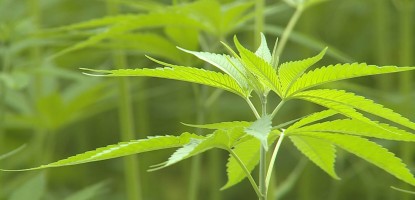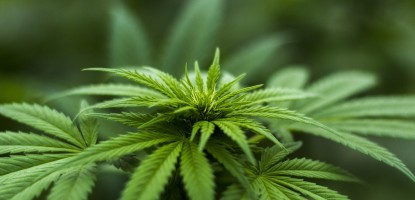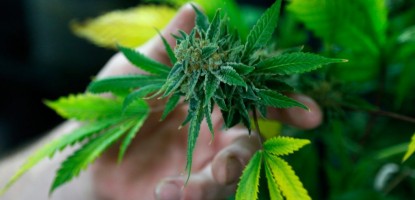Cotton is one of the most grown plants and cash crops in India, providing a livelihood to over 6 million farmers. However, cotton cultivation is heavily associated with hazardous pesticides. Cotton consumes about 45 percent of the total pesticides used in the country. These chemicals can pollute the environment, affect other vegetation and cause harm to farm workers and nearby communities.
Furthermore, cotton is a water-intensive crop, requiring a lot of water to grow. It is a labor-intensive crop. Harvesting cotton by hand is very slow and difficult work. And even when mechanized equipment is used, it can still take a lot of time and effort to harvest a cotton crop.
All of these factors make cotton an unsustainable crop for farmers. They have to use large amounts of water and chemicals and put in long hours of hard labor just to produce a product that might not turn a profit.
Hemp fabric is a suitable alternative to cotton because of its properties. Hemp is a plant-based fiber used for centuries to make many products, from rope and paper to clothing and car parts. Recently, it's been making a big comeback as a sustainable alternative to cotton in the textile industry.
How Can Hemp Replace Cotton?
Cotton is a popular material for clothing and other textile products, but it has some serious environmental drawbacks. Hemp fabric and cotton share a few similarities, but hemp clothes tend to have a canvas-like feel, making them less susceptible to shrinkage.
The fabric is durable; it is believed that a hemp shirt can last twice as much as the cotton one. Furthermore, the hemp fabric is also lightweight, meaning it is highly breathable and ideal for hot climates. The fabric softens as you wash without the fiber degrading.
There are several reasons why hemp can be an excellent alternative to cotton:
Hemp is environment friendly & carbon warrior
Cotton cultivation heavily requires pesticides. While they are needed to protect the plants and bring a higher yield, they negatively affect the environment. They can contaminate the soil, water, and other vegetation. Furthermore, they affect human health and can even lead to death.
Hemp is not toxic and requires little to no pesticide, depending on where it is cultivated. Switching to Hemp Clothing would mean planting more Hemp plants which help the process of CO2 absorption from the atmosphere at a faster pace as compared to other trees. These environmental benefits of Hemp help humanity to combat climate change.
In addition, hemp grows much faster than cotton, so it can be harvested more frequently. This means that farmers can rotate their crops and allow the land to rest, which helps to prevent soil depletion.
Hemp consumes less water without polluting water
Cotton is a water-thirsty plant. It is estimated that each kg of cotton requires about 10,000 liters of water. This is compared to 2,000 liters to produce the same amount of hemp.
Hemp can be cultivated under relatively dry conditions, making it a more sustainable option. By using hemp instead of cotton, farmers can reduce their water usage and help to conserve this important resource. There is minimal use of agrochemicals which eliminates top-soil erosion caused due to logging. This would also lower the risk of pollution of water bodies such as rivers, lakes, streams, etc.
Can hemp reverse the effects of climate change
Hemp requires less energy to grow and produces more fiber per acre than cotton. Cotton production is a major contributor to greenhouse gas emissions, while hemp has a smaller carbon footprint. Carbon emissions are the chief contributor to global warming and the depletion of the ozone layer.
Hemp not only reduces carbon emissions but also purifies the atmosphere. It traps more carbon from the air than any other forest crop (one hectare of industrial hemp can absorb 22 tonnes of carbon emissions).
Hemp is also used to create eco-friendly products, such as paper, insulation, and biodegradable plastics. When you choose hemp over cotton, you are helping to reduce the negative impact of cotton production on the environment.
Hemp reduces soil contamination or toxicity.
Heavy metals in industries contaminate the water and environment and risk human health. Unfortunately, these metals are not biodegradable and will continue to cause harm for years.
Bioremediation (the process of using plants to remove toxins from the soil) has been used to reduce contamination. Hemp is an excellent plant for the process. It absorbs the toxins and cleans the soil. The plants obtained from these contaminated areas do not need pesticides; secondly, they are used to make biofuel.
Unlike cotton, which depletes the soil it is grown in, hemp enriches the soil it was grown in. This is because hemp produces a lot of biomass, improving soil quality.
Hemp offers great potential for sustainable agriculture.
Unlike cotton, which is limited in types of byproducts, hemp is a versatile plant that offers great potential for sustainable agriculture. Hemp can make different products, including paper, clothing, and biofuel.
Hemp fabric is durable and can be made into various products, including clothing, bags, and home furnishings.
Furthermore, it can produce oil containing omega 3 and 6 and offers significant health benefits.
Hemp can turn a quick profit
Cotton requires more land to be cultivated, and it takes about 150 to 180 days to be harvested. Furthermore, the crop produces only 500 pounds of fiber per acre. Hemp can make a quick profit because it takes about 105 to 115 days to be harvested and produces 1,500 pounds of fiber per acre.
The hemp plant is versatile and gives you numerous byproducts that can be sold for profit.
Hemp has antibacterial properties
The interest in antibacterial textiles has increased in recent years. These fabrics are believed to reduce infection transmission in the healthcare environment.
Hemp fiber has alkaloids and flavones antibacterial properties that are effective against disease-causing bacteria. The plant is also anti-mildew and hypoallergenic. Also, hemp socks keep the feet odor-free because of their antifungal properties
Hemp fabric is breathable
Cotton is a hydrophilic material, meaning it absorbs water easily. This can be great in hot weather as it helps the fabric breathe. However, hemp is also breathable, if not better than cotton. Hemp fabric is interwoven and lightweight, which allows more air to pass through. Hemp sheets offer better sleep than cotton because they are more porous, meaning it is easy for the body to breathe while sleeping.
The fabric is also antibacterial, anti-mildew, and anti-odor, reducing bacterial buildup and odor and allowing your body more fresh air.
Final Thoughts
The production of hemp fabric is environmentally friendly and puts less strain on land and soil. It is considered a carbon-negative plant, absorbing more cotton than it produces. Additionally, the plant requires fewer pesticides, if any, compared to cotton.
Hemp fabric is also stronger and more durable than cotton. It is naturally resistant to mold and mildew and doesn't fade or shrink as cotton fabrics can. Hemp fabric is also breathable and absorbent, making it a comfortable choice for clothing.
However, it is said that the crop may require more nitrogen than cotton. Also, you must adhere to the THC regulation when harvesting the plant.
But, other than that, hemp is a great option if you're looking for a more sustainable alternative to cotton. It's environmentally friendly, efficient, and durable.







Leave a Comment